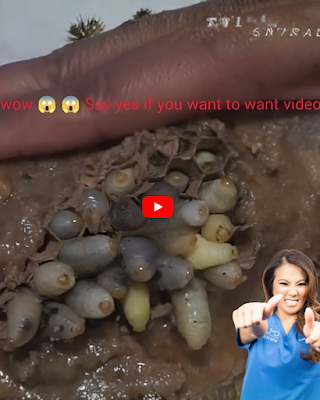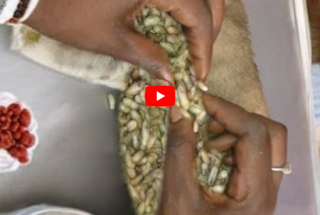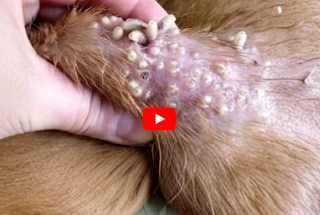8 Safe Ways to Remove and Prevent Mango Worms in Dogs (With Professional Care)
Mango worms — also known as Tumbu fly larvae — are parasitic flies that lay eggs on soil, clothes, or bedding. When dogs lie on contaminated ground, the larvae burrow into their skin, creating painful swellings filled with pus and worms.
If your dog becomes infected, quick and professional treatment is essential. Below are eight safe and effective steps to manage and prevent mango worms — focusing on proper veterinary care and prevention.
1. Seek Immediate Veterinary Help
The first and safest step is to take your dog to a veterinarian. The vet will confirm that the bumps are caused by mango worms and not another condition (like bacterial abscesses or mites). Attempting home removal can be dangerous and painful for your pet.
A vet uses sterile instruments to gently extract each larva without breaking it, reducing infection risk.
2. Controlled Larva Extraction (By a Vet)
The vet typically numbs the area and applies gentle pressure around the lesion to push the larva out intact. Sometimes, a small incision is made for easier removal.
The extracted larvae are disposed of safely to prevent re-infestation. This process ensures all worms are removed completely and minimizes tissue damage.
3. Wound Cleaning and Disinfection
After removal, the open wounds are thoroughly cleaned using antiseptic solutions such as povidone-iodine or chlorhexidine. This helps prevent secondary bacterial infections and speeds up healing.
Your vet may also prescribe antibiotic ointments or oral medications for a few days, especially if there were multiple lesions.
4. Medication and Pain Relief
Post-removal, your vet might recommend:
- Antibiotics to prevent infection
- Anti-inflammatory or pain-relief medications to reduce swelling and discomfort
- Topical ointments to help the skin heal faster
This professional aftercare is essential for complete recovery.
5. Regular Cleaning of Bedding and Surroundings
Mango fly eggs often hatch in soiled bedding, soil, or fabric. Wash your dog’s bedding, blankets, and mats in hot water and detergent, and dry them thoroughly in the sun.
Clean and disinfect sleeping areas weekly to eliminate eggs and larvae. If your dog sleeps outdoors, make sure their area is dry and raised above the ground.
6. Use Preventive Medications and Parasite Control
Regular use of veterinary-approved parasite preventives helps keep your dog safe from many pests, including flies and worms.
Ask your vet about:
- Monthly spot-on treatments
- Fly-repelling sprays or collars
- Anti-parasite shampoos
Consistent prevention is much easier than treating an active infestation.
7. Maintain Good Hygiene and Grooming
Keep your dog clean, especially during the rainy season when mango flies are most active. Bathe them regularly and inspect their skin for any unusual bumps or boils.
Good grooming habits — brushing, trimming hair, and cleaning paws — make it easier to spot early signs of infection.
8. Keep Your Environment Clean and Fly-Free
Since mango flies lay eggs in decaying matter or soil, keeping your surroundings clean is vital.
- Dispose of dog feces promptly
- Keep garbage bins sealed
- Avoid letting your dog lie directly on bare ground
- Use fly traps or repellents in your yard
A clean, well-maintained environment is the best long-term protection against mango worm infestations.
Can Humans Get Mango Worms?
Yes, humans can occasionally become infected — usually by wearing contaminated clothes dried outdoors. Always iron clothes after drying outside and avoid lying on bare ground in tropical areas.
Final Thoughts
Mango worm infections can be distressing for both pets and owners, but the good news is that they’re completely treatable with professional care. Never attempt to squeeze or remove the larvae at home — this can worsen the infection and cause unnecessary suffering.
With prompt veterinary treatment, proper hygiene, and preventive measures, your dog can make a full recovery and stay free from future infestations.



